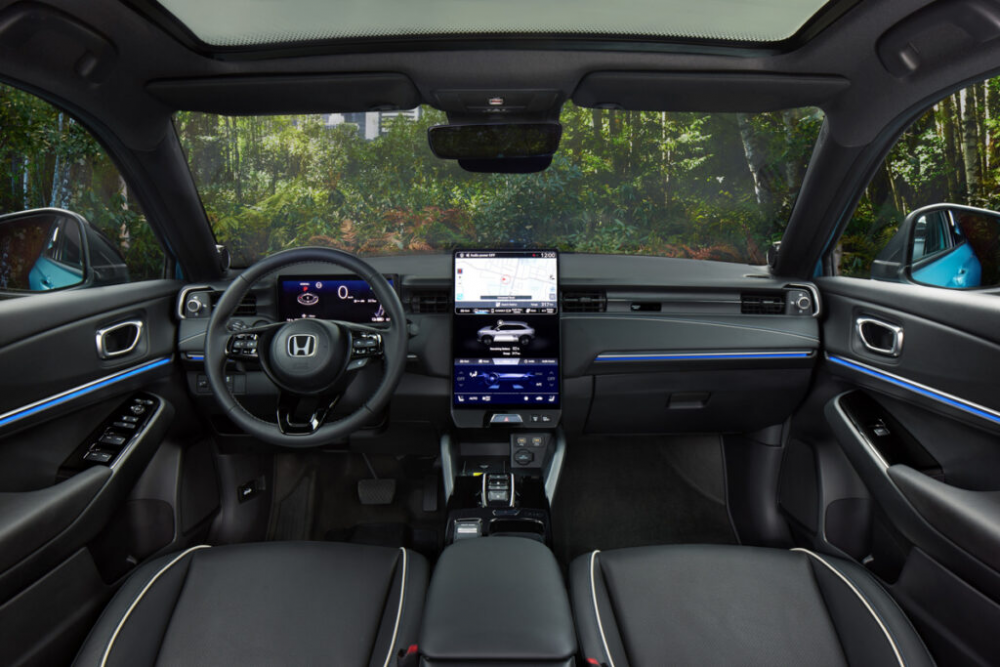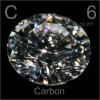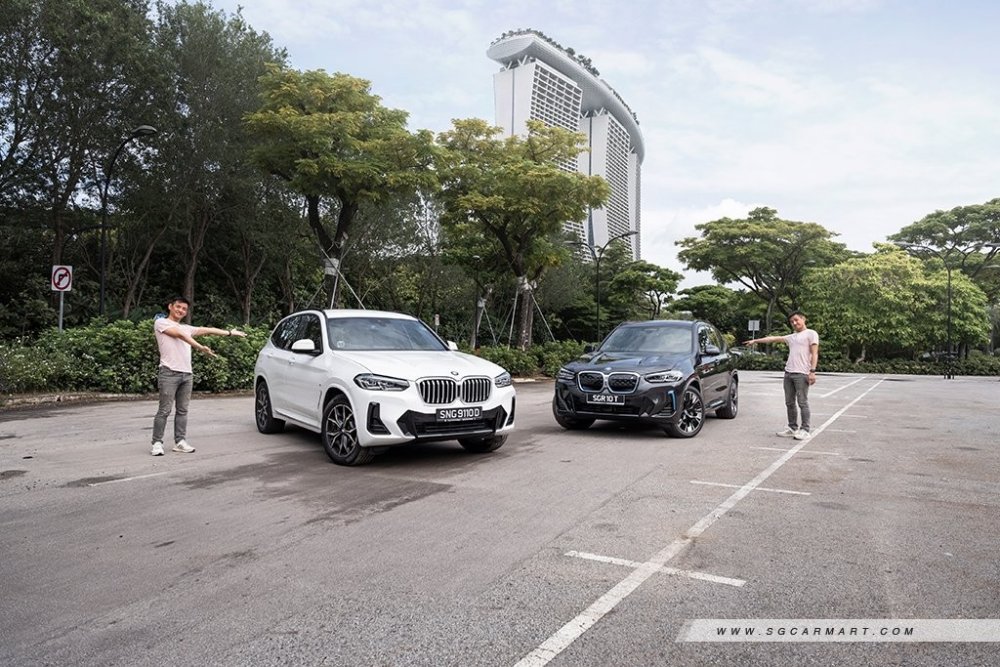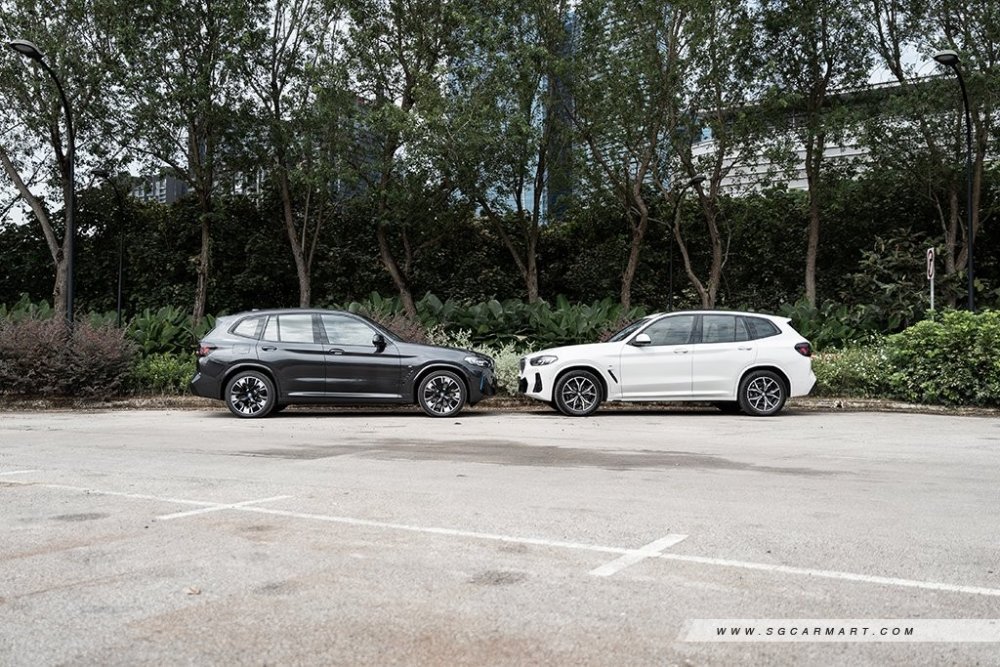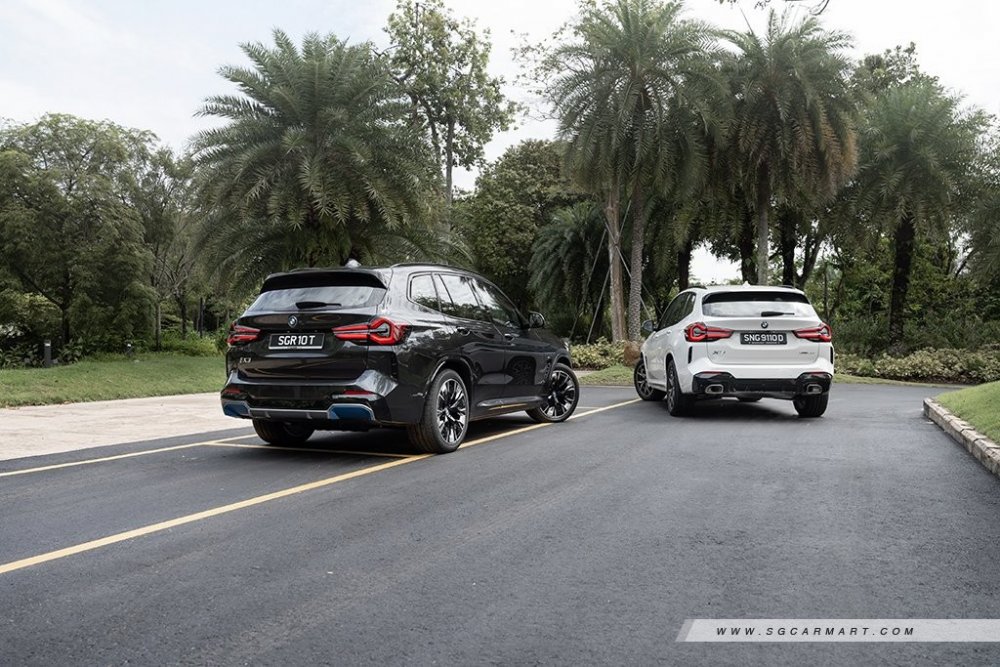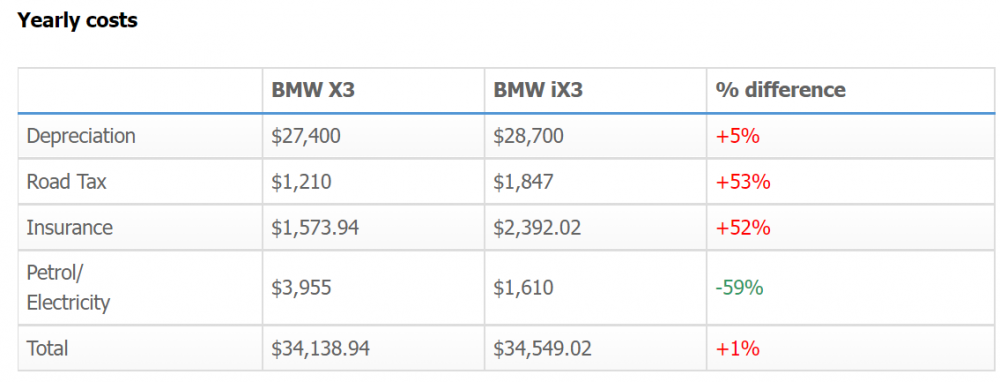Search the Community
Showing results for tags 'Electric car'.
-
Ford built this concept demonstrator at the request of several police departments. source: https://www.motor1.com/news/532111/ford-mustang-mache-police-concept/ Municipalities around the world are showing interest in electric vehicles for a variety of purposes. With more interior room, significantly lower maintenance costs, and zero-emission operation, they fit with the future narrative playing out in major cities. Police departments are no exception, and several locations in the UK are interested in seeing how the Ford Mustang Mach-E could work as a full-fledged patrol car. That interest led Ford to develop a Mach-E concept specifically for police departments across the pond. This one-off creation will be evaluated by England's Metropolitan Police Force, but several other departments around the UK want a go behind the wheel. Aside from the Day-Glo exterior treatment and the requisite lightbar, the cop-spec Mach-E is fitted with special mounting pods and brackets to help suss out locations for items without causing too much damage to the vehicle. The LED lighting systems also run on a separate battery, so the Mach-E's range is unaffected by its emergency gear. This isn't the first time Ford developed a Mustang specifically for police use. The fox body Mustang notchback served police agencies across the United States through the 1980s and 1990s as the Mustang SSP. Standing for Special Service Package, the pony car received a variety of upgrades for added durability and functionality as an interceptor and yes, they all had Ford's venerable 5.0-liter high-output V8. Some even had a manual transmission. With an electric powertrain, the Mach-E wouldn't require heavy-duty upgrades like stronger hoses and extra coolers for engine oil or transmission fluid. The Mach-E also has considerably more interior space versus the old 5.0, and in GT guise it can reach 60 mph in under four seconds. That would make it tough for the bad guys to escape, provided they don't reach open roads for a long-distance sprint. For now at least, this is just a one-off vehicle for evaluation purposes. But we wouldn't be surprised to see an official Mach-E SSP cop car from Ford in the years to come.
-
https://www.channelnewsasia.com/singapore/electric-vehicles-ev-charging-points-hdb-car-parks-2025-2547471 Nearly 2,000 HDB car parks to have at least 3 EV charging points each by 2025 File photo of an electric vehicle (EV) charging point in Singapore. (Photo: iStock/taikrixel) Grace Yeoh Grace Yeoh 08 Mar 2022 01:37PM (Updated: 08 Mar 2022 01:37PM) Bookmark Share SINGAPORE: To make every Housing and Development Board (HDB) town “EV-ready” by 2025, nearly 2,000 HDB car parks will each have a minimum of three charging points. These charging points will “mostly provide low-powered, overnight charging”, to meet the needs of car owners and minimise the load on the electrical grid, said Transport Minister S Iswaran on Tuesday (Mar 8). Advertisement Speaking during a multi-ministry joint segment on the Singapore Green Plan 2030 at the Committee of Supply debate, Mr Iswaran said more charging points will be installed in car parks where there is demand and adequate electrical capacity. The Land Transport Authority (LTA) said in a press release that the move is a “significant step” in achieving Singapore’s target of 60,000 EV charging points by 2030. A “large-scale tender” for HDB car parks will be launched in the first half of this year, it added. Singapore’s land transport emissions peaked at 7.7 million tonnes of carbon dioxide equivalent (MtCO2e) in 2016 - way ahead of the 2030 timeline set at the national level, LTA said. As such, the Government has set a new target of reducing emissions by 80 per cent from the 2016 peak by around 2050.
- 71 replies
-
- 1
-
.png)
-
- ev charging
- charging
-
(and 3 more)
Tagged with:
-
315km range 49 kw battery funky and roomy... like! Will this come to SG and give BYD a run for the money?
-
Hi folks! I have not seen related discussion before hence starting one. All EV drivers, please share your experiences and recommendations for tyres? I know most EVs are new in Singapore. Tesla, BYD, BMW I series, Mercedes EQ series, Audi e-tron series etc. EV cars are much heavier than ICE, tyres I guess have to use EV specific ones to achieve good comfort, performance and most importantly thread wear. I am currently driving BMW iX3, stock came with Yokohama, hence I am looking around. Explored tyrereviews and understand that Michelin , Bridgestone, Goodyear are the top 3 tyres, are they also good for EVs? Correct me if I am wrong. Hope to hear from you all! TIA
- 50 replies
-
- 2
-

-
- electric car
- evs
-
(and 6 more)
Tagged with:
-
Dear All, My son is doing a survey for his school project on the public perception of Electric Car charging stations in Singapore. Really appreciate you could help fill this survey when you are free. The survey is anonymous, NO GMAIL login needed and NO personal data is collected. Here is survey link: https://docs.google.com/forms/d/e/1FAIpQLScDyOfCYkR5w7v0CLzK20rZuJgiQwmCwS6rjQ1ytZpVDWk8fA/formResponse This might take you 1-2 minutes. Thank you very much for your cooperation and participation. Have a nice day😁
-
SINGAPORE - Electric van leasing company EVCo has been put under insolvent liquidation, with debts of almost $50 million. EVCo, also known as Strides DST, is 60 per cent owned by transport operator SMRT’s business arm Strides Holdings and 40 per cent by Dishangtie Green Technology (Hong Kong). The two-year-old firm was incorporated in March 2022 with a paid-up capital of $10 million. The company was put under provisional liquidation not long after its former chief executive officer Fuji Foo and chief financial officer Janice Low were arrested in connection with a police investigation in late 2023. A list of creditors obtained by The Straits Times showed that as at Feb 28, there were 28 creditors with $49.4 million due to them. It is not immediately clear if more creditors had come forward since Feb 28. The list showed that the biggest amount is due to OCBC Bank, which is owed $47.6 million. SMRT itself is owed $38,675, while various Strides-related units are owed a combined amount of around $590,000. Baker Tilly has been appointed liquidator. Mr Timothy Reid, a principal at Baker Tilly, said the company is in insolvent liquidation – meaning whatever remaining cash and assets will not be enough to repay all its debts. Sources said assets include a fleet of China-made electric vans, which would have devalued substantially on the back of sliding certificate of entitlement prices. Electric vehicles left unused for a prolonged period are also likely to suffer from battery degradation. Mr Reid added that all the creditors so far are unsecured creditors, which implies that there is no defined priority as to who gets repaid first. While it is not common for banks to give unsecured loans, especially to start-ups, The Straits Times understands that some do so based on the standing of a parent company or majority shareholder; in this case, Temasek-owned SMRT. As Strides-DST is a private limited company, the liability of its shareholders is limited to the amount of capital they contributed. When contacted, SMRT would only say that EVCo had gone into voluntary liquidation and an independent liquidator has been appointed. Strides-DST chairwoman Judy Lee was unreachable for comment. Meanwhile, OCBC Bank would not comment, citing Singapore’s banking secrecy Act. One creditor, who spoke on condition of anonymity, said: “I’m speechless. But I’ll say that this is down to poor management, poor execution and exploiting loopholes.” In October 2022, the company announced its target to have a fleet of 2,000 electric vans for a vehicle-sharing programme, which allows SMEs different leasing packages, including a pay-per-use option. Half a year after it was set up, EVCo said it would have 550 vans ready from January 2023. In March 2023, the company registered 197 Chinese-made Shineray electric vans. EVCo is the only company to offer this brand of vehicle in Singapore. According to the Land Transport Authority, there were 218 Shineray vehicles registered in 2023. https://www.straitstimes.com/singapore/transport/electric-van-leasing-firm-evco-declared-insolvent-with-debts-of-close-to-50m
- 23 replies
-
- 4
-

-
.png)
-
- electric car
- smrt
-
(and 1 more)
Tagged with:
-
Looks almost identical to the current HRV.. Exciting with a really powerful motor. But will it make it to SG? https://carbuyer.com.sg/honda-eny1-all-electric-suv/ https://www.autoexpress.co.uk/honda/357642/new-honda-eny1-electric-suv-unveiled-full
- 15 replies
-
- 3
-

-
https://carsnkopi.wordpress.com/2023/12/30/shockingly-good-driving-the-lotus-eletre-s/ As I hold the beautifully shaped key to the Eletre in my hand, I'm reminded of the time when Lotus officially introduced it to our local market. An event that sparked a personal contemplation on the seismic shift within the automotive landscape. The emergence of electric vehicles has not only opened doors for smaller manufacturers to emerge and shine but has also prompted a profound reinvention amongst established legacy brands for the new age. In this automotive evolution, the smaller and more agile automakers, once overshadowed, have emerged into the spotlight, orchestrating a notable shift. Their newfound presence now subtly but significantly steering the industry narrative toward an era defined by electrification. Beyond mere updates, the best of these smaller automakers are now actively involved in a profound narrative rewrite, skillfully integrating heritage with cutting-edge technology. Enter, the Lotus Eletre, the first of a new breed of pure electric SUVs. Buckle up, there is a lot to take in. Priced at S$598,800 without COE (as of writing), the Eletre doesn't position itself as a budget-friendly option. Despite a few flaws, its futuristic aesthetics, striking visual impact, elegantly designed interior, impressive ride quality, and sharp handling allow the Eletre to punch well above its weight straight into the million-dollar realm of the BMW XM, Aston Martin DBX and even the Lamborghini Urus. It is that good. Contrary to sounding like mere office jargon, the guiding principle of "Born British, Raised Globally" emerged as the driving force behind the remarkably condensed three-year development journey of the Eletre. An impressive feat, given that most legacy manufacturers typically require between five to eight years for similar endeavors. In this short timeframe, Lotus not only established a design center and assembled a team to shape the car's distinctive aesthetics but also, very proudly, ventured down the unconventional path of creating a bespoke electric platform for the Eletre instead of relying on existing solutions within the Geely empire. Importantly, this bespoke platform is exclusively tailored for the Eletre and will not be shared in any form with its sister marques. The culmination of this intensive project involved collaboration among Lotus teams from the UK, Germany, and China. Lotus calls this platform the Electric Premium Architecture (EPA), a term that delves into complexities beyond my grasp. In simpler terms, it aligns with the basics seen in other electric platforms—a skateboard chassis and strategically positioned batteries low in the floor. Nevertheless, I'm sure the Eletre has no doubt benefitted from an infusion of magic by their renowned chassis engineers. While the EPA platform forms the groundwork, it's the exterior skin that commands attention at the very first glance. A captivating blend of curved lines, straight edges, hollowed-out scoops, intricate vents, floating wings, and a juxtaposition of convex shapes and concave surfaces. The simultaneous interplay of numerous elements might seem unconventional, but here, they harmoniously come together, unveiling fresh details and discoveries with every change in perspective. The Eletre's aggressive cabin-forward Emira-esque aesthetic exudes freshness, futurism, and forward-thinking, coupled with a delicate touch in its execution. Notably, it manages to render even an Urus look bloated and dated in comparison. The numerous aero elements seamlessly integrated into the Eletre's striking exterior go beyond mere embellishment. These elements serve practical purposes, expertly guiding and channeling air through strategically placed vents in the bonnet, behind the front wheel arches, at the rear wheels, and atop the D-pillars. Up front, an active grille reduces drag, cools electric motors, and aids braking. At the rear, a distinctive floating carbon fiber split roof spoiler and an active rear wing dynamically enhance performance. Lotus aptly terms this comprehensive approach to exterior aesthetics their 'Porosity’ or ‘Carved by air’ design language, a philosophy that took the same three years to meticulously perfect. Integrated seamlessly with the 'Porosity' design philosophy, the Eletre features deployable LIDAR cameras linked to an impressive system of 34 sensors. Propelled by two Nvidia Orin-X chips, capable of executing a staggering 500 trillion operations per second, this not only future-proofs the Eletre for Level 4 Autonomy but also achieves a pioneering world-first in a production car, supporting end-to-end autonomous driving (AD) technology. Presently constrained by regulations, it operates at Level 2 with automatically raising front LIDAR cameras, permitting only brief periods of hands-off operations. Pity. What has escaped the shackles of regulations, restraint, or legacy is the exquisitely crafted and assembled interior—an unparalleled departure from any Lotus that has preceded it. An unmatched departure from any Lotus that has come before. This departure isn't just a step forward for a Lotus; it embodies sophistication with few qualifiers. It is exceptionally nice inside. Every detail exudes a premium quality, from the leather-wrapped steering wheel with its aluminum buttons, toggles and paddles to the Alcantara trim along the center console and even its leather-wrapped grab handles. Bestowing upon the Eletre a profound sense of uniqueness and luxury. With fully ventilated massage seats all around, the cabin transforms into an exceptional space to relish together with its negative oxygen ion purifier and a Dolby Atmos enhanced 2,160-watt, 23-speaker KEF Reference Audio system that also features active road-noise cancellation for reduced in-cabin noise. Playing centre stage inside is a new-generation 15.1 inch OLED Digital Head Unit from global mobility tech company ECARX. Fueled (hehe) by a dual-chip system, it harnesses server-level computing power for swift processing and seamless rendering, ensuring instantaneous response with zero lag. However, despite having one of the most responsive and vibrant touchscreens seen in any car, its Lotus Hyper OS interface grapples with usability issues as its interface design prioritizes aesthetics over functionality, creating a user experience that falls short in terms of practicality with unlabelled buttons and touch targets that are ridiculously minuscule in relation to its screen size. Moreover, second-level screens can at times appear cluttered, featuring an excess of descriptive text, further hampered by difficulty in discerning confirmation popups. While these concerns might be more forgivable in a lower-priced vehicle, addressing them through an "Over-The-Air" update will significantly enhance the Eletre's overall appeal. Requiring no "Over-The-Air" updates whatsoever (not that it's even possible) is the cargo hold of the Eletre. A topic I never imagined discussing in relation to a Lotus, yet here we are facing 688 litres of boot space in the rear (along with a 46-litre frunk). It even boasts a delightful party trick with its air suspension system, allowing the rear of the car to be fully lowered for easier loading or even tailgate parties. With our test car's optional "Exexcutive" fixed individual rear seats, a fixed partition prevents any expansion of space. Opt or the standard benched rear seats and holding capacity can be expanded to a properly capacious 1,532 litres. Now that we've set the stage, it's time to thumb the starter button and electrify ourselves down the road. Only, that there's no starter button to speak of! While it might seem like a rather unconventional approach, Lotus's decision to remove the starter button does make sense. As an electric vehicle with no motor to start, the car powers up automatically once you're inside, streamlining the process and eliminating a somewhat redundant step. With 603 electric horses and 710Nm of torque, the century sprint is a very brisk and remarkably linear 4.5 seconds. When you put your foot down from rest, the Eletre quite unexpectedly and effectively picks itself up, hustling down the road with little drama—devoid of the sledgehammer-like pulls we've come to expect from other high-performance SUVs. Mid-range pull with 710Nms of juice is instantaneous and often catches other road users off guard who would never expect such an already sizable machine to engulf their rear view mirrors with such exuburence. Handling driving modes and regenerative braking strength are the exquisite metallic paddle shifters. Paddles on the left modify regenerative braking, while those on the right enable you to cycle through its five driving modes: Tour, Sport, Range, Off-road, and Individual. While Sport mode tightens everything up, including the seat's side bolsters, it is in Tour where the balance between ride and handling is at its best, offering a high level of sharp handling characteristics without sacrificing comfort. With a kerb weight of 2,500 kilos, the Eletre will not dance like an Elise, but it manages to hide its heft fairly well with its continuously controlled twin-chambered air suspension connected to aluminium multi-link components. Sharp turn-ins and composed handling define most bends, with the variable power delivery working its magic to effortlessly rapidly you out of corners with ease and finesse. Indulge in unrestricted throttle play, and the Eletre's weight becomes increasingly noticeable, especially in the tightest of turns, but you'd have to be rather dedicated to upset its balance. On the down-side, while the Lotus effortlessly responds to all of my inputs, I found myself wishing for more than a one-sided conversation. Its slightly cold steering and lack of a distinct "engine" note to accompany its impressive pace left me yearning for an additional layer of engagement, drama and character. Yes, bring in augmented driving sounds! Unrestricted throttle play also has its downsides because while Lotus claims a maximum driving range of 600 kilometres from its 112kWh battery, I managed roughly around 500 kilometres. Still a very decent number but not quite near its claimed figures. That said, throughout my time behind the wheel, what struck me most was not merely the car's competence or poise, but also the increasing enjoyment I derived with each passing moment. I can't believe I'm saying this about an Electric Vehicle but It was truly a pleasure to drive, not only when tackling winding roads but also during leisurely cruises. With Lotus's automotive electric revolution still in its infancy, they have knocked it out of the park with the Eletre. Its visual allure, adept driving dynamics, exquisite interior, and rarity blend just enough to position it among the exclusive list of cars that feel a touch more special than the rest, allowing it to punch well above its S$598,800 without COE (as of writing) pricetag to comfortably sit alongside the BMW XM, Aston Martin DBX and even the Lamborghini Urus. With the Eletre, it's evident that Lotus have not only set their sights on the current generation of performance SUVs but also those of a generation or even two generations beyond. While it has its flaws, I expected it to be good, but I didn't expect it to be this shockingly good. For those ready to counter with Colin Chapman's wisdom, here's another gem from the man himself: "Rules are for the obedience of fools and interpretations of smart men."
-
First photo of the entry level EV from Tesla. It will be officially unveil in the next couple of hours. Stay tuned. In order to be as fair as possible, there will be a different queue for each region. And as a thank you to our current owners, existing customers will get priority in each region. Model 3 production is scheduled to begin in late 2017. When production begins, we will begin deliveries in North America starting on the West Coast, moving east. As we continue to ramp production, we will begin deliveries in Europe, APAC and right-hand drive markets. It is not possible to ship to all regions simultaneously because regulators in each part of the world have slightly different production requirements. Staggering deliveries in this way also allows us to provide the best possible customer experience. We recognize that everyone wants to get their Model 3 as quickly as possible. Our overarching goal is to maximize total customer happiness within the bounds of what is physically possible. Tune in to the Model 3 unveil on March 31st at 8:30pm PT on Tesla.com. We can't wait to show you what we've been working on.
- 227 replies
-
- 6
-

-
TL;DR - An owner of a BMW iX Electric gets caught charging his $460,000+ car at a public power outlet. I pay taxes. You pay taxes. We all pay taxes. But, when you see $hit like this, you can’t help but get angry at where some of our taxpayers’ money goes to. Watch the video here to see if it infuriates you as well: How much is the car? A quick search on Sgcarmart revealed that this car is the more expensive variant and costs a whopping $460,888! How expensive does it cost to charge a car? As I’m not an owner of an EV, I just did a quick Google search and turns out, it’s really cheap to charge! So why would the owner of an expensive car choose to do this? Let’s see what netizens think shall we? Online Chatter COE is quite insane at the moment. Sounds dangerous. Insurance does not cover stupidity after all. ========= Be the first to get the latest road/ COE news, and get first dibs on exclusive promos and giveaways in our Telegram SGCM Community. Join us today!
- 2 comments
-
- bmw
- ix electric
- (and 8 more)
-
There's been so much going on about how EVs are the future and how EVs are cheaper to run than ICE cars because of the low maintenance cost - technically the only maintenance for an EV would be your tyres, brakes, fluids, battery and wiper blades lol - and how electricity (per km) is cheaper than fuel (per km). Our colleague Desmond takes the BMW X3 and its electric counterpart the iX3, for an apple-to-apple comparison to figure out if it's really cheaper to go electric. Copied the table above from the article just for those who are lazy to click in but it's an interesting read so click here if you can afford the 5 minutes read. Some might also argue there are intangible costs not mentioned in the article e.g. time and inconvenience costs while waiting for your EV to charge up. EV owners will be asking everyone to look at the bigger picture - not so much about cost savings but doing our collective part to reduce emissions and help fight global climate change. The current electric cars in the market are much more expensive than ICE cars and will probably put off most car buyers from switching over (at least for now), but the early adopters will be key to driving technological advancement and improvements. What do you think? Do you see yourself changing to an EV in the next 5 to 10 years?
- 90 replies
-
- 2
-

-
- electric car
- savings
-
(and 3 more)
Tagged with:
-
Switching to an electric car gives you a smoother, emission-free drive. Much has changed since electric cars entered the scene about a decade ago. Back then, the thought of owning - or even driving - an electric car was a remote one, with few electric vehicles (EVs) and charging points available. Spotting one in public was like sighting a unicorn. Today, the EV landscape has totally transformed, with practically every brand producing EVs. They even come in a range of models - from sedans, SUVs, hatchbacks, and more. Alongside this, charging points in Singapore are also more widely accessible. Given the availability of EV charging points across the island, and how EVs give a smoother, emission-free drive, now could be the time to consider switching from a regular internal combustion engine (ICE) car to an EV. Here are the reasons why. Incentives & rebates First things first: When you buy an EV in Singapore, you can avail the incentives launched by the Land Transport Authority (LTA) to electrify our vehicle population as it works towards having 100% cleaner energy vehicles by 2040 under the Singapore Green Plan 2030. This means you can take advantage of the EV Early Adoption Incentive, which grants those who register an electric vehicle a rebate of up to 45% off the Additional Registration Fees (capped at $20,000). You may also be able to qualify for the Enhanced Vehicle Emissions Scheme, which offers rebates of up to $25,000 for cars classified under the A1 Band. Plus, with the Revised Road Tax Framework, the road tax for mass-market EVs has become more comparable to that of their ICE equivalents. In fact, LTA has already revised the Maximum Power Output threshold for EVs from 97kW to 110kW, so that more mass-market EV models now fall under the less expensive COE Category A. In total, these incentives give buyers of new EVs combined savings of up to $45,000 in rebates. Those whose cars are in the 90-230kW power rating bracket will see their annual road tax reduced by up to 34%. Cheaper maintenance So EVs are more affordable compared to when they first hit the market. How about maintaining it? An EV's electric motor is simpler and has fewer components. Apart from improved reliability, this also means the battery, motor and associated electronics require little to no regular maintenance. There are fewer fluids and parts that need to be maintained, changed, or replaced such as engine oil, oil filters, air filter, spark plugs, fuel filters, timing belts and radiators. Regenerative braking - an innovative feature in EVs that helps recharge batteries on the go by transforming kinetic energy from braking back into electric energy stored in the car's batteries - reduces brake wear and the build-up of brake dust. This extends the life of parts such as cables and brake pads. Combining all these savings, the cost of maintaining an EV can be just up to a third of the expense of maintaining an ICE vehicle, thereby lowering your running costs. A smoother drive If you've never driven an EV and you're wondering how driving one will compare to its ICE counterpart, you will be pleasantly surprised. A huge advantage is that the EV's electric motor delivers torque instantly, whereas a petrol-powered engine still needs to increase its revolutions per minute (RPM) to increase its power output. This translates to a seamless and rapid power delivery, which - as we at SGCM can attest to after having test-driven EVs of all makes and models - makes an EV feel sharper and more responsive. Quieter and more comfortable rides Having an electric motor also has near-zero levels of vibration and operating it produces significantly less noise than an ICE car. Apart from improving your comfort level inside the car, you can also enjoy music and have better conversations with your passengers with less distractions due to the absence of engine noise. Better range, less anxiety Range anxiety, or the fear that your car battery may die while you're on the road, is very much a real thing, especially back when charging points used to be far and few between. With many EV models now offering a driving range of at least 350 km though, you have less to worry about. This is more than sufficient to meet the needs of the average motorist in Singapore. Generally speaking, most drivers average 50km a day commuting to and from work, with perhaps an errand or two in between. An EV with around a 350 km range means you should only have to charge it approximately once a week. Recharging can be as simple as plugging it in once a week when you get home, leaving it to get 'juiced up' overnight, and driving off the next day with a fully-charged battery. More charging points coming your way In addition, Singapore's EV charging network is rapidly expanding. As of today, there are already over 3,000 charging points island-wide, with more on the way. In just three years' time, every HDB town will be EV-Ready, with charging points in nearly 2,000 HDB carparks. It won't stop there. As EV adoption increases, LTA will deploy additional charging points to meet the higher EV charging demand. By 2030, Singapore will have 60,000 EV charging points. Easier to find charging points Finding a charging point is not like finding a needle in the haystack anymore. Just use the MyTransport.SG app to find charging points offered by the major providers. Apart from helping you locate charging points, the app also displays information such as pricing, power rating and type of plug to help drivers plan their charging schedule, as well as the real-time availability of EV charging points - starting with those under CDG-E & SP Mobility. After finding your preferred charging point in the app, you will be redirected to the operator's app for payment, or to Google Maps for navigation. Upgraded safety standards EVs come with Battery Management systems that regulates the charge voltage, temperature, and battery health, ensuring that the EV's batteries operate and is charged within its prescribed safety limits. In addition, Singapore's updated EV charging standard, Technical Reference 25 (TR25) stipulates the proper installation of charging points and mandates periodic safety inspections. TR25 is reviewed not just by the Government, but also by industry and academic stakeholders to ensure that Singapore stays relevant in the landscape by incorporating the latest EV charging technologies and supporting the safety of the EV ecosystem in the country. For example, under TR25, the use of household extension cords to charge EVs from 13 Ampere household sockets is banned. Low-powered charging is permitted using 15 Ampere (15A) sockets, with each socket allowed to serve only one charger at a time to avoid electrical overloading. Singapore also adheres to international standards like United Nations Economic Commissions for Europe R100 (UNECE R100) to reduce the risk of electrical, thermal, or mechanical failures. Better for the environment Climate change is a real issue that affects everyone, which means we should all play a part in alleviating it - such as by switching to EVs if we need a car. EVs are significantly more environmentally friendly compared to ICE cars in more ways than one. An EV emits half the amount of carbon dioxide (CO2) than a comparable ICE vehicle. This means that if all cars in Singapore are EVs, carbon emissions would be reduced by an astounding 1.5 to 2 million tonnes. With an average car weighing about 1.5 tonnes, that would make it equivalent to the weight of up to 1.3 million cars! EVs also help curb noise pollution as they produce less noise than ICEs, particularly at low speeds. With the prospect of minimum noise levels to be regulated under new laws in Singapore for technical standards and safety precautions soon, driving an EV, which emits less noise than an ICE vehicle, will put you ahead of the curve. To switch or not to switch If it's inertia that's holding you back from making the switch, consider this the push that you need. EVs are quieter, more environmentally friendly, and deliver smoother performance compared to ICE vehicles. The charging infrastructure has evolved to be more convenient and accessible, with even more improvements in the horizon. So, should you now consider switching to an EV? It is, quite simply, an easier question to answer than ever before and the thought of owning an EV in Singapore is truly a viable option that needs to be seriously considered.
- 1 comment
-
- electric vehicle
- electric car
-
(and 1 more)
Tagged with:
-
While many auto manufacturers are gearing up for the next wave of automotive revolution, to produce more electric cars (including PHV - Plug-in Hybrid Vehicle) in-lieu of gasoline / diesel powered vehicles, are buyers and local government agencies (e.g. LTA, NEA, SCDF, BCA, etc.) ready for this big wave, and I am not merely referring to the basic infrastructure concerns, such as charging and servicing facilities. As the title suggested, this thread is more for taking an in-depth view on Safety and Environmental concerns, with regards to sales, usage, servicing and disposal of electric cars (mainly with the batteries). For a start, I will just be touching on the following, while more topics will be added in due course. I would welcome all to share their thoughts, and relevant stakeholders to take a leaf out of this topic. 1. Batteries At the moment, there are 2 main type of batteries commonly used in electric / hybrid vehicles: i) Nickel Metal Hydride (NiMH) ii) Lithium Ion (Li-ion), which uses different cathode materials such as Cobalt Dioxide, Nickel-cobalt-manganese, Nickel-cobalt-aluminum, Manganese oxide spinel & Iron phosphate. NiMH is most widely used in automotive industries as it is relatively safe in term of raw materials use, during charging / discharging, and emit less harmful substances during a fire, BUT have a lower power density (typically about half of what Li-ion can do), meaning it will either have a shorter traveling distance, or take up much more usable space (and weigh more) if to maintain a certain mileage. Li-ion, on the other hand, while enable electric cars to cover hundreds of miles per charge (without taking too much boot or cabin space), are much more hazardous, in the way that it can have a run-away reaction (resulting in fire / explosion) when exceeded a certain operating / storage temperature (~60 °C), emit toxic gases and substance during a fire, so more awareness and precaution is needed. Due to the characteristics of these batteries, special considerations have to be taken during storage, handling and usage, such as proper ventilation (to prevent gas built up - Oxygen, Hydrogen, etc.), minimized risk of dropping / knocking (Li-ion batteries maybe be rendered unsafe if dropped or subjected to sever impact), means of safety cut-off (to prevent over heating, triggering run away reaction) and such. 2. Building Infrastructure With reference to the above, special facilities (with precise temperature monitoring and control, enhanced ventilation system, specific fire-fighting system and equipment) maybe required for storing large amount of batteries. Mixed occupancy, i.e. storage and workshop facilities under the same roof, have to be carefully evaluated, to identify incompatible activities, e.g. workshop may produce excessive heat / spark (ignition source) thereby increasing the risk of fire / explosion. Also, is the existing fire compartmentation for building (fire code, regulations) sufficient to contain battery fire? Li-ion batteries for example will continue to burn once it hit the auto-ignition temperature, and the only control is to cool the surrounding to prevent fire from spreading to neighboring premises / units. In the case of an electric vehicle fire within say a basement car park, building structure must be able to withstand the period of time when the batteries continue to burn, ventilation system to be able to effectively remove toxic gases produced, such as CO, Ni & Li vapor, and means of cooling provided to contain the fire. 3. Fire Fighting and Emergency Response Interestingly, the most commonly used dry power extinguisher is NOT going to work on Li-ion batteries. Beside using cat D extinguisher - for metal fire (which is not commonly available anywhere), the next best option is water, mainly to cool down the surrounding and lower the battery temperature (to prevent explosion). And for fireman, the protocol is to attempt fighting the fire ONLY WITH proper respiratory protection - full breathing apparatus (prevent inhalation of toxic gases / vapors). If you thing this is no big difference from other fire fighting attempts, you are wrong. Fireman will also have to adopt the proper procedure. One important step is to cut off the power supply to the vehicle. Tesla has done pretty well in detailing the steps to fight fire on it vehicles (through publishing Emergency Response Guides for vehicles in their lineup). And hopefully our fireman from SCDF, when deployed to handle such electric car fire, will be fully aware of these steps... And here is a video taken recently, when a team of firefighters in Austria was responding to a Tesla Model S on fire. Firefighters with full BA set (breathing apparatus) Firefighters accessing to power disconnection switch And the responsible shall be shared by the owner of electric car too. They have to be fully aware of what to do when their vehicle catch fire, and keeping the fireman informed of the key information, e.g. location of power cut off switch, battery packs, etc. 4. Servicing and Disposal of Batteries The onus shall be mainly on the workshop and dealer performing the job (provided the owner send their electric cars to the right place for the job). Beside safety concerns with the high voltage of the electrical system, proper charging and discharging process must be observed during replacement. For example, if the positive and negative terminals of the battery come into contact, short circuit will arise, followed by fire. On environmental front, proper supply chain has to be established, to ensure that the used batteries will be disposed in accordance to local and international standards and guidelines. And during the treatment process, again, the toxic material and gases have to be properly taken care of. T.B.C.
- 205 replies
-
- 20
-

-
- electric car
- safety
-
(and 7 more)
Tagged with:
-
Lexus show off electric LFA successor at Goodwood! https://insideevs.com/news/594373/lexus-lfa-successor-goodwood/amp/
-
Whether we like it or not, electric vehicles are the future. With the growing awareness that the world is literally burning, most car manufacturers are making the shift to electric. Here in Singapore, while progress has perhaps been slower than anticipated, we are seeing a gradual shift towards electrification - both on the buyer’s end, as well as the infrastructure to support these cars. And unlike even just a couple of years ago, these days, living with an EV is increasingly easy. 1. More choices In 2014, there was only one electric passenger car available to the Singaporean driver for purchase: The affable and unmistakeable BMW i3. Now, however, choices run the gamut of the entire car industry. Encompassing not just compact hatchbacks, but proper sedans and SUVs as well, electric cars cover an entire range of prices, from more mass market targeted models to super high-end luxury models. If there isn’t one now (and that’s already quite unlikely), it’s guaranteed that an electrified car that suits your needs, lifestyle preferences and budget is on the near horizon. On the note of budget, increasing scales of economy coupled with legislation that encourages the uptake of electric vehicles mean that the days of exorbitantly priced EVs are disappearing into our rearview mirrors - great news for all of us! 2. Growing charging network Singapore’s charging network today is already miles ahead of what it was just a couple of years back. Even so, we can expect even greater things on the road ahead. Returning to the i3, we reviewed this premium and peppy little runabout twice - in 2014, and then again in 2017 - and twice, we lamented that Singapore’s charging infrastructure had not caught up sufficiently to make it magnetic enough for consideration. Thankfully, things are very different at the dawn of 2022. 2021 was a watershed year for the electrification of cars in Singapore. It wasn’t just the fact that more brands were opening up their showroom doors for new electric models to zip into our market. More importantly, we received multiple signals that the time of an electric Singapore was finally nigh. From HDBs to shopping malls, we will soon find spaces to seamlessly integrate charging our cars into our daily routines. It was announced in September last year that 620 charging stations will be progressively installed around HDB carparks by the third quarter of this year. In line with the Singapore Green Plan, eight towns spread out across the island have also already been gazetted as “EV-ready”, and will be prioritised for the installation of charging points. Back in 2019, only 1,900 of such charging stations existed on our island. When 2030 swings around, at least 60,000 charging points will have been also installed, with 40,000 of them designated for public carparks. In the meantime, modern solutions - such as mobile apps for locating chargers near you and tracking the progress of charging - also promise to make the process intuitive and easy. 3. Ease of parking Another benefit of going electric is the access to unique perks - in the form of priority parking. In increasing numbers, you would have surely noticed car park lots in shopping malls being painted over in green over the last few years. Reserved only for the drivers of hybrid and electric cars, these are sure to proliferate further as we move towards cleaner vehicles. If you happen to the proud owner of one of these cleaner-emission cars, the perks you can enjoy are in fact actually twofold. Firstly, instead of having to circle around endlessly for space, you can immediately slot yourself into one of these green lots - an undeniable relief especially in malls that typically packed to the rafters. Secondly, these lots are typically situated the closest to the main entrances to the malls from car park, making entry and exit extremely convenient. To further the electric transition, BMW and Capitaland are collaborating to offer BMW EV and PHEV drivers $5 off parking daily at three well-loved Capitaland malls - Plaza Singapura, Funan and Raffles City Shopping Centre - from 1 Mar 2022 to 31 Dec 2022*. Redemption of the credits is fuss-free - simply present your car key and BMW Performance SG App or BMW Charging card to the respective Customer Service Counter of each mall to get a reward code. Upon keying in the reward code, an eVoucher will be issued via their CapitaStar mobile app and $5 will be deducted from their parking charges upon their exit.. The eVoucher has to be activated 15mins prior to exciting the carpark. *Redemption is limited to one CapitaStar member per day.
- 2 comments
-
- 1
-

-
- electric
- electric vehicle
-
(and 1 more)
Tagged with:
-
The Impressive Engineering Behind The Cheapest Electric Car In The World The cheapest new electric car in the world, the $1,200 Changli Nemeca from Chinese e-commerce website Alibaba, is a truly amazing machine. This became clear as soon as my coworker Jason Torchinsky unboxed the car and saw its unexpected features, and even more so when he drove it. But it wasn’t until he and I looked at the tech under the skin that we truly realized the Changli’s unbelievable value. Here’s a look at the engineering behind the incredible 1.1 horsepower Changli. Jason had a vision last year: He was going to buy the cheapest electric car in the world from Alibaba, ship it across the ocean to the U.S., deal with all the customs paperwork, truck the car down to his place in North Carolina, and show the world what the wackiest form of EV ownership looks like. Amazingly, despite uncertainty within our company, and despite the coronavirus and related economic turmoil, he pulled it off. The car that began life in Jiangsu, China now sits in Jason’s backyard in Chapel Hill, where the machine immediately blew us away with its impressive features.
- 12 replies
-
- 3
-

-
.png)
-
- cheapest
- electric car
-
(and 4 more)
Tagged with:
-
TL;DR – Nissan Kicks e-POWER seemingly 'steals' a carpark lot from another car and crashes head first into the MSCP railings. Cam car who witnessed and submitted the video claims that it was an accident. A 20-second video of a Nissan Kicks e-POWER stealing a carpark lot at a multi-story carpark has been circulating around social media and WhatsApp chats today. Here’s the footage What it looks like At first glance, it clearly looks like the Kicks had every intention to steal the carpark lot and received instant karma for being selfish and inconsiderate. Damage report 1. The Kicks hit the car that was reversing into the empty carpark lot 2. It also hit the MSCP railings really hard and caused cracks to appear on the walls 3. The force of impact was also strong enough to deploy all the air bags in the Kicks Video witness speaks up So, this found its way into one of my WhatsApp group chats. I guess we need to do some research on the Nissan Kicks to verify. Nissan Kicks e-POWER Screenshot by automotiveworld.com I think the driver begs to differ on the whole ‘enjoyable and engaging’ aspect of the Kicks’ ‘One-Pedal operation’. There’s also a brake pedal for emergencies by the way. Image by carbuyer.com.sg Online Chatter I’m going to include more comments this time round because a lot of people have tons of things to say. Exciting things happening on a Saturday. ----------------------- Thinking of selling your car? sgCarMart Quotz guarantees the highest selling price for your car. We’ll even give you $100 cash if you find a better offer elsewhere! Get a free quote to find out how much your car is worth today!
- 3 comments
-
- 1
-

-
- nissan kicks
- nissan kicks e power
- (and 7 more)
-
All EVs offer a multitude of measures used to slow down the process of battery degradation. However, the process is inevitable. While electric vehicles have been proven to have considerably lower ownership costs compared to their ICE counterparts, battery longevity remains an equivocal subject. Similar to how consumers ask how long the batteries can last, manufacturers often question the same subject. ''Every single battery is going to degrade every time you charge and discharge it,'' Atlis Motor Vehicles CEO, Mark Hanchett, told InsideEVs. Essentially, it's inevitable that your electric car battery, or any rechargeable Li-ion battery, will lose its capacity it once had. However, the rate at which it'll degrade is the unknown variable. Everything ranging from your charging habits to the very chemical makeup of the cell will affect your EV battery's long-term energy storage. While many factors are at play, there are four main elements that assist in further degrading EV batteries. Fast Charging Fast charging itself doesn't necessarily cause accelerated battery degradation, but the increased thermal load can damage the internal components of the battery cell. The damage of these battery internals leads to fewer Li-ions being able to transfer from the cathode to the anode. However, the amount of degradation the batteries face is not as high as some may think. Earlier last decade, the Idaho National Laboratory tested four 2012 Nissan Leafs, two charged on a 3.3kW home charger and the other two strictly charged at 50kW DC fast stations. After 40,000 miles, the results showed that the one charged on DC only had three percent more degradation. 3% will still shave your range, but the ambient temperature seemed to have a far greater effect on the overall capacity. Ambient Temperatures Colder temperatures can slow down an EV's charge rate and temporarily limit the overall range. Warm temperatures can be beneficial for rapid charging, but prolonged exposure to hot conditions can damage the cells. So, if your car is sitting outside for long periods, it's best to leave it plugged in, so it could use the shore power to condition the battery. Mileage Like any other rechargeable lithium-ion battery, the more charge cycles, the more wear on the cell. Tesla reported that the Model S will see around 5% degradation after breaching 25,000 miles. According to the graph, another 5% will be lost after around 125,000 miles. Granted, these numbers were calculated via standard deviation, so there are likely outliers with defective cells that weren't shown in the graph. Time Unlike mileage, time typically takes the worst toll on batteries. In 2016, Mark Larsen reported that his Nissan Leaf would lose around 35% battery capacity at the end of an eight year period. While this percentage is high, it's because it's an earlier Nissan Leaf, which is known to suffer from severe degradation. Options with liquid-cooled batteries should have much lower percentages of degradation. Editor's note: My six-year-old Chevrolet Volt still shows it uses 14.0kWh after depleting a full battery. 14.0kWh was its usable capacity when new. Preventative Measures To keep your battery in the best possible condition for the future, it's necessary to keep these things in mind: If possible, try to leave your EV plugged in if it's sitting for an extended period of time in the summer months. If you drive a Nissan Leaf or another EV without liquid-cooled batteries, try to keep them in a shady area on the hotter days. If your EV has the feature equipped, precondition it 10 minutes before driving on hot days. This way, you can prevent the battery from overheating on even the warmest summer days. As mentioned above, 50kW DC isn't as detrimental as most think, but if you're sticking around town, AC charging is cheaper and usually more convenient. Plus, the aforementioned study did not include 100 or 150kW chargers, which most new EVs can utilize. Avoid getting your EV below 10-20% battery remaining. All EVs have a lower usable battery capacity, but avoiding reaching the battery's critical zones is a good practice. If you drive a Tesla, Bolt, or any other EV with a manual charge limiter, try to not exceed 90% in day-to-day driving. Are there any EVs should I avoid? Almost every used EV has an 8 year / 100,000-mile battery warranty which covers degradation if the battery's capacity drops below 70%. While this will offer peace of mind, it's still important to buy one with enough warranty left. As a general rule of thumb, any old or high mileage option should be cautiously regarded. The battery technology available today is far more advanced than tech from a decade ago, so it's vital to plan your purchase accordingly. It's better to spend a little more on a newer used EV than paying for an out-of-warranty battery repair.
-
This is the Alpha WOLF electric pick-up truck, and if you’ve never heard of the company let alone the car, that’s entirely understandable. It’s a Californian EV startup that started making waves last year when it released rendering. But now there’s a real one. One Top Gear Magazine’s Jack Rix can look, touch, and sit in the back of cross-legged. So let him be your guide to the truck to take on Tesla’s Cybertruck and Rivian’s R1T. Which would you have?
- 7 replies
-
- 1
-

-
- alpha wolf
- alpha
-
(and 2 more)
Tagged with:
-
Ever since its first showroom launch in Singapore, Tesla has received a lot of attention and hype from local drivers. Located at One Assembly in Raffles City, the sparkling mini-showroom proudly features two units of what Elon Musk calls an “affordable” electric car – the Model 3 sedan. Intending to bring clean energy solutions to individuals globally, the high-profile American brand has raised the standard through its vehicles and proved that one could achieve a powerful and fast car without fossil fuels. Tesla drivers not only save money overall but save the earth as well. With the government intending to switch to an all-electric vehicle Singapore by 2040, the American brand’s local release came at just the right time. However, the main question still stands – is buying a Tesla worth it? Are Teslas too expensive? According to Tesla’s sales portal, the Standard Range Plus Model 3 will cost $113,245* while the Model 3 Performance will go for $155,283*. Images were taken from Tesla Both prices do not include the cost of additional features and interior/exterior options, as well as COE, which means you could pay an additional $50,000 - $60,000. With the additional features, expect to pay about $173,245* for the Standard Range Plus Model 3 and $215,283* for the Model 3 Performance. For those prices, you can undoubtedly purchase something similar or more luxurious like the Renault Zoe Electric ($159,999*) or the BMW 2 Series Gran Coupe Luxury ($190,888*) and the Audi A4 ($188,016*). Although, it is worth noting that the Model 3's performance figures (0 - 100 km/h in 5.6s) obliterate every other car in its price bracket, making it an especially good deal. Audi A4 40 BMW 2 Series Gran Coupe Luxury Audi A4 45 Tesla Model 3 Images were taken from The Car Guide The Model 3 enjoys the EV Early Adopter Incentive (EEAI), which includes a 45% rebate of the ARF, capped at $20,000, and an additional reimbursement of $45,000. This rebate is the highest for any car in Singapore and its attractive discounts make drivers eager to own a piece of Elon Musk’s technology. * All prices were taken from Tesla and sgCarMart Will there be charging problems for HDB owners? After its soft launch in July, Tesla has set up three charging points on the ninth floor in Orchard Central carpark. While private estate owners can opt to install a home charger with the help of Tesla Certified Installers, consumers living in HDB estates cannot enjoy the same luxury. Given that most Singaporeans live in HDB apartments, does this mean that prospective owners are only limited to these three stations? Even though there is a limited number of Tesla V3 Superchargers in Singapore, the Model 3 is compatible with Type 2 AC and CCS2 DC fast-charging stations. This allows drivers living in HDB estates to charge their cars at various third-party charging stations by SP Group, Shell-Greenlots and BlueSG. Image was taken from Shell Greenlots If you’re afraid that there won’t be enough places to charge your vehicle, there is a wide variety of different charging stations powered by various companies across Singapore. With BlueSG having more than 1,000 points across the island, it is safe to say that finding a charging station for your shiny new Tesla will be the least of your worries. Is the cost of maintenance high? Contrary to widely held belief, the cost of maintaining a Model 3 is much more affordable than one thinks. Since Teslas are fully electric, many standard maintenance items do not apply. These include brake jobs, oil and filter changes, accessory belt replacements, engine air filter and fuel filter changes. Image was taken from AsiaOne The recommended routine maintenance includes tire rotation, brake fluid replacement, cabin air filter replacement, windscreen wipers replacement and air-conditioner servicing every two years. Overall, the cost of maintaining a Tesla is cheaper than fuel vehicles in the market. Is a Tesla still worth it? There are still a select few who believe that going electric brings more harm than good. While concerns regarding the cost of a Tesla are still circulating amongst the local driving community, the company has significant plans to expand its offerings and make its luxury sedans more affordable. Coupled with the extensive number of rebates from the government, drivers might find themselves owning a piece of extraordinary technology without paying excessively. At the end of the day, the benefit of owning a Tesla outweighs its cons. Sure, it is a lot of money to invest in a vehicle, but you can’t put a price tag on saving the environment. --- Thinking of selling your car? sgCarMart Quotz guarantees the highest selling price for your car. We’ll even give you $100 cash if you find a better offer elsewhere! Get a free quote to find out how much your car is worth today!
-
- commentary
- tesla
-
(and 3 more)
Tagged with:
-

Six reasons why you should now make the choice to go electric
Deeq posted a blog entry in MyAutoBlog
With growing capabilities, improving charging and expanding choices, the decision to go electric is becoming easier by the day. Electric Vehicles (EVs) are the future. That's a given. More and more brands are increasingly electrifying their portfolios, and new incentives from the Government are also further encouraging the use of EVs. However, it's perfectly understandable that not every driver is ready to go electric right now. Even as EV technology continues to advance, existing anxiety and questions about EV usage and ownership persevere. Here are six common concerns about EVs, and how they continue to be addressed. 1. Limited battery range and life Range is of course a continuing concern when it comes to EVs. Great strides have been taken in this regard - compared to the limited range of earlier EVs, modern EVs like the new rear-wheel drive Porsche Taycan have a range of 434km. Based on the latest data.gov.sg statistics, cars travel an average of 48km a day in Singapore. As such, a Taycan could easily be used for a whole week with some charge still to spare. Battery life should also be a diminishing concern. Porsche offers an 8-year battery warranty, but EV batteries are estimated to be able to last more than 10 years before a replacement is required. Of course, battery capacity will degrade over time, but proper use and care will help extend battery life. And moving forward, battery capacity and affordability will continue to improve. Since 2010, the price of an average Lithium-ion battery pack has dropped by over 80%. So, replacing the battery won't be as intimidating as it may seem. 2. Lack of charging infrastructure The availability of charging can be a limiting factor for the use of EVs in Singapore. Right now, there are around 1,600 charging points available, and the Government has announced that 60,000 charging points will be installed by 2030. Porsche and Shell have also partnered to have six charging stations along Malaysia's North-South Highway equipped with 180kW DC chargers, offering the highest charging capacity across Singapore and Malaysia. Charging your Taycan from 5 to 80% will take just 30 minutes. This will offer seamless travel from Singapore all the way to Penang. For Taycan customers, Porsche Centre Singapore will also appoint a certified electrical specialist to conduct a full electrical and spatial check of parking facilities at a residence or workplace, and to install the included Porsche Charging equipment if possible. The installation is subsequently assessed and approved in accordance with Singapore regulations. 3. Slow charging time Charging times also continue to tumble as charging technology and battery capability improve. The Taycan's 800V architecture allows the battery to be charged at a maximum capacity of 270kW, which can add 100km of range in 5 minutes, and charge from 5 to 80% in 22.5 minutes. Using a standard 11kW AC charger, the Taycan can be fully charged from 0 to 100% in 9 hours or under, depending on the model variant and battery size. Even with the bigger Performance Battery Plus, charging from 5 to 80% at a 50kW DC charger takes about 90 minutes - a good amount of time to do your weekly supermarket run or catch up with friends over brunch. And, adding up to 100km of range takes about 30 minutes. 4. Safety concerns about the battery While exploding e-scooter batteries may make for an attention-grabbing gif, batteries in EVs are much better protected. And they should be - it is effectively the heart of the car. The Taycan's battery is housed in the underbody of the car, with the waterproof housing forming a load-bearing component of the body structure, and secured by means of a steel protective plate. The complex cooling system also ensures that the battery is operating at specific temperatures regardless of the outside temperature. 5. Unknown maintenance costs Maintenance is an inevitable and recurring cost of owning a car. With EVs still relatively new to our market, long-term maintenance costs may still be slightly unknown. However, compared to a typical internal combustion engine car, an EV has significantly fewer moving parts, which would generally reduce maintenance costs. The components that would require regular maintenance are the brakes, wheel alignment, air-con and battery optimisation. For ease of mind, Porsche offers a complimentary 5-year maintenance and warranty programme that covers all maintenance and repair including of wear and tear. This is on top of the 8-year battery warranty. Customer who wants absolute peace of mind can also opt for the extended warranty for up to 15 years. 6. Lack of choice 10 years ago, drivers keen on electric cars had fairly limited options. Now, there are at least 15 brands that offer fully electric models, which really shows how far things have come since. Even within the Porsche Taycan lineup, you have plenty of choice. Four model variants are available, ranging from the base rear-wheel drive Taycan to the monstrously powerful 751bhp Taycan Turbo S. And of course, as with any Porsche, extensive personalisation options are available via Porsche Exclusive Manufaktur means that you can create a truly unique car of your own. And let's face it, EVs aren't just the way forward, they are also here to stay. Thankfully, with growing battery and powertrain capabilities, improving charging facilities and expanding choices, EVs are increasingly practical to live with and use daily. As a result, you would be wise to consider making the switch today. --- Thinking of selling your car? sgCarMart Quotz guarantees the highest selling price for your car. We’ll even give you $100 cash if you find a better offer elsewhere! Get a free quote to find out how much your car is worth today!-
- electric car
- ev tech
-
(and 1 more)
Tagged with:
-
http://www.ign.com/articles/2013/07/18/tesla-model-s-review Read the review. Sounds exciting!
- 503 replies
-
- 1
-

-
- tesla
- tesla model s
-
(and 3 more)
Tagged with:
-
As shared by SG Road Vigilante on its Facebook page, this driver entered a Multi Storey Car Park at Punggol, only to see a BlueSG turning out of the lot and heading straight at him. Well, this wouldn't have been a problem if they were on a two-way road... Understandably, both drivers stopped in their tracks, stunned for a moment. Where is the BlueSG trying to go anyway? Right, just hop over that kerb and reach for the exit like there isn't a gigantic obstacle painted in striking yellow and black... I've always seen BlueSG cars driving fast and sometimes dangerously on the expressways, I chalk it up to their strictly duration-based charging - the faster you reach your destination, the less you pay. Maybe that's what this driver's trying to do? These comments brought up an important point, indeed, it seems unlikely anyone would damage their own car this way. But, hey, don't go right out and rent one to fulfill your dream of driving like Dominic Toretto, you'll still be liable for traffic offences, and will have to foot some hefty repair bills if you damage the BlueSG! Driver of the BlueSG, if you are reading this, do yourself a favour and check out their terms and conditions.
-
Alibaba and SAIC have joined forces to launch an all-new automotive brand called IM (智己). Set to become China’s latest premium electric vehicle maker, the company will have a lineup that includes a stylish sedan and crossover. The sedan features a streamlined design and an intelligent lighting system which reportedly consists of 2.6 million pixels of light. They can be used to show animations as well as the charging status. Besides the high-tech lights, the sedan has flush-mounted door handles and aerodynamic wheels. We can also see a panoramic glass roof, a roof-mounted sensor pod and full-width taillights. The upscale styling continues in the cabin as drivers will find semi-aniline leather, wood trim and metallic accents. The sedan has also been equipped with dual pane windows and electric closing doors. Those features are nice, but they’re largely overshadowed by a 39-inch widescreen display that rises out of the dashboard and is broken up into three different sections. If that wasn’t enough screen space, there’s a secondary 12.8-inch display that ramps out of the center console like in the 2021 Mercedes S-Class. Speaking of technology, the car has been equipped with 15 high-definition cameras, 12 ultrasonic sensors and five millimeter wave radars. They’re used for the semi-autonomous driving system and Tesla-like summon feature. At the end of the year, IM will reportedly offer point-to-point autonomous driving. Details are limited and it’s reportedly dependent on government approval. However, NVIDIA confirmed the vehicles use their DRIVE Orin compute platform and have multiple Orin SoCs. They allow for “500 to 1,000+ TOPS [trillion operations per second] of performance for automated and autonomous capabilities in addition to in-cabin personalization that is continuously upgradable over-the-air for a truly software-defined experience.” On the performance front, there are two electric motors which give the vehicles all-wheel drive as well as a combined output of 536 hp (400 kW / 544 PS) and 516 lb-ft (700 Nm) of torque. This will enable the sedan to accelerate from 0-62 mph (0-100 km/h) in 3.9 seconds. A 93 kWh battery comes standard, while a 115 kWh battery will also be available. With the latter, the sedan will reportedly have a range of up to 543 miles (874 km) in the NEDC cycle. Interestingly, the car is set to come with the world’s first mass-produced high-speed wireless electric vehicle charger. It charges at up to 11 kW and can give the car a range of 43-50 miles (70-80 km) in as little as an hour. Getting back to performance, the vehicles ride on an aluminum architecture and feature chassis tuning by Williams. We can also expect an adaptive damping system and rear wheel steering. The sedan will be showcased at the Shanghai Auto Show in April, while the crossover will follow in 2022.
- 9 replies
-
- 13
-

-
.png)
-
- electric vehicle
- electric car
-
(and 3 more)
Tagged with:
-
With the planned phasing out of combustion engines by 2040, we find out from Cars & Coffee about how an electric car might just work out well today. Thinking of getting an Electric Car (EV) in Singapore? Well, it isn't as hard as you think it is. With the government planning to phase out the sale of new cars with Internal Combustion Engines by 2040 along with added incentives, EV ownership is set to increase in the next few years. But can you make that choice today? We go to Cars & Coffee to find out more with its large lineup of cars, that also includes EVs. 1. They're fast and cool There's something that everyone can enjoy when it comes to EVs: Their ability to provide instantaneous torque. Perhaps the car manufacturer that truly represents this is Tesla. Cars & Coffee has the Model 3 sedan. With 510Nm of torque pushed out from its single electric motor, you can expect pretty rapid acceleration. But elsewhere, the Model 3 is a cool car inside and out. It sports a minimalist interior with a huge 15-inch display to control various infotainment and vehicle features, plus, an all-glass roof. And, most importantly, there's nothing short of cool about being seen in a Tesla today. 2. Small and practical, too But an electric car doesn't have to be a luxurious go-fast option. You can have them in compact, practical packages too. Check out the Honda e available at Cars & Coffee. If a practical roundabout is what you're after, the Honda e is a pretty sweet choice. And it looks cool too. It looks quirky and fun, with proportions just a tad smaller than the quintessential Honda Jazz. It's decked out in features. There's five screens displaying various driving and infotainment information. And in a bid for more efficient aerodynamics, it has cameras instead of wing mirrors - a cool party trick to show your passengers. 3. Servicing is easy As car owners, you're used to the routine of frequent oil changes, spark plugs and the like. Electric vehicles don't have to deal with the greasy, oily affair - they don't have internal combustion engines. The routine maintenance then only generally applies to things such as your brake pads and discs, tyres, and of course topping up your windshield washer fluid. It is cheaper in the long run, and thanks to the lesser maintenance, many EVs offer longer warranty periods. Cars & Coffee for example offers a five year or 130,000km warranty on the Tesla Model 3, whichever comes first. 4. Charging isn't as hard as you think it is We've grown used to seeing our fuel gauge close to empty, popping by a petrol station and filling up. It takes 10 minutes - and lets you drive for a considerable distance before ever needing to fill up again. The age-old idea that EVs take forever to charge is dead. They now charge as fast as your own mobile phone. The Honda e, for example, can charge at one of SP Group's 50kW fast chargers from 20 to 80% in under 30 minutes. And more and more charging stations will be coming up in Singapore. This year's Budget has announced that there will be 28,000 charging ports in Singapore by 2030. Another good reason to go for an EV now are reserved lots! Many malls offer reserved parking lots for electric cars, some even offering free charging! You'll never worry about finding a parking lot again. 5. Better rebates for EVs With government initiatives to encourage car buyers to choose cleaner, more efficient vehicles, EVs will stand to benefit, too. From 1 January 2021, the updated Vehicle Emissions Scheme rebate will be increased by $5,000, meaning a Band A1 vehicle will benefit from a $25,000 rebate. But that's not all when you pick an EV. The Electric Vehicle Early Adoption Incentive offers a rebate of 45% off the Additional Registration Fee for EVs, capped at $20,000. Which means, if you are planning to buy a Band A1 EV from 2021, you can benefit from a rebate of up to $45,000! So, if you have the means to get an electric vehicle today, there are certainly a lot of benefits. With the government planning to phase out the sale of internal combustion engines by 2040, why wait when you can start today? Looking for a new car? Head on down to Cars & Coffee Singapore at these locations. To get in touch, you can contact Cars & Coffee Singapore at 6266 5555.
- 1 comment
-
- electric car
- electric
-
(and 1 more)
Tagged with:










